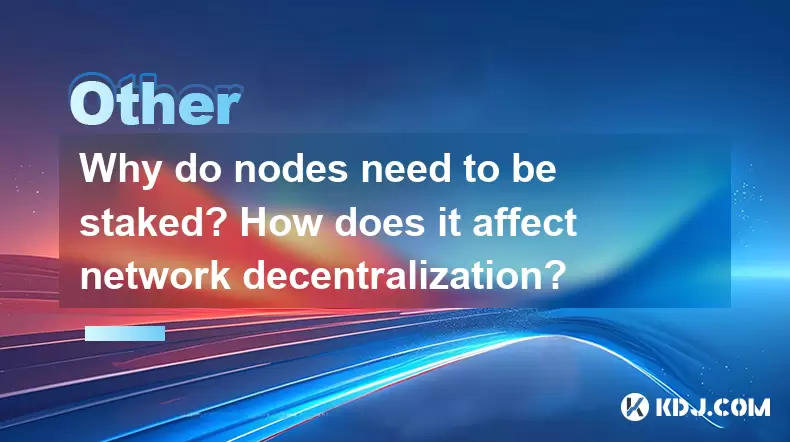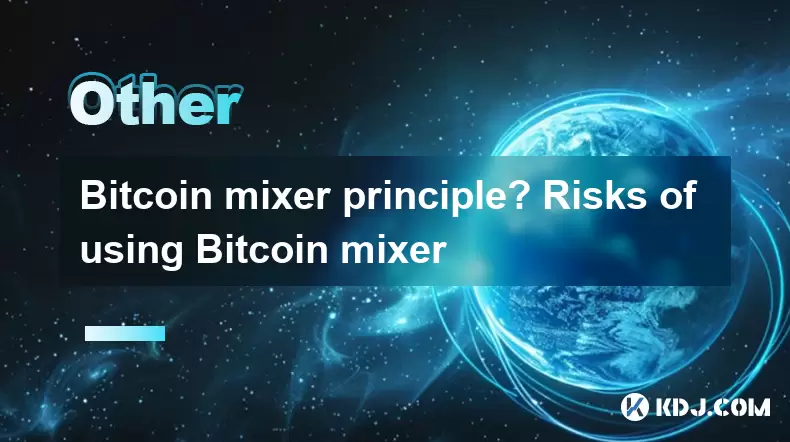-
 Bitcoin
Bitcoin $105,532.8157
0.77% -
 Ethereum
Ethereum $2,548.2202
1.33% -
 Tether USDt
Tether USDt $1.0002
-0.03% -
 XRP
XRP $2.1658
1.38% -
 BNB
BNB $647.8634
0.54% -
 Solana
Solana $151.9004
5.13% -
 USDC
USDC $0.9998
-0.01% -
 Dogecoin
Dogecoin $0.1757
-0.78% -
 TRON
TRON $0.2728
1.24% -
 Cardano
Cardano $0.6296
0.95% -
 Hyperliquid
Hyperliquid $40.9018
1.86% -
 Sui
Sui $3.0030
4.30% -
 Bitcoin Cash
Bitcoin Cash $460.9894
8.08% -
 Chainlink
Chainlink $13.1954
1.60% -
 UNUS SED LEO
UNUS SED LEO $9.2807
2.61% -
 Avalanche
Avalanche $19.0609
0.65% -
 Stellar
Stellar $0.2573
0.56% -
 Toncoin
Toncoin $2.9704
1.32% -
 Shiba Inu
Shiba Inu $0.0...01197
-0.39% -
 Litecoin
Litecoin $85.9390
1.13% -
 Hedera
Hedera $0.1534
-0.05% -
 Polkadot
Polkadot $3.7860
0.74% -
 Ethena USDe
Ethena USDe $1.0000
-0.04% -
 Monero
Monero $317.1834
1.33% -
 Dai
Dai $0.9997
-0.02% -
 Bitget Token
Bitget Token $4.5199
-0.24% -
 Pepe
Pepe $0.0...01111
1.43% -
 Uniswap
Uniswap $7.1573
-0.52% -
 Pi
Pi $0.6033
-0.63% -
 Aave
Aave $273.9232
0.85%
Why do nodes need to be staked? How does it affect network decentralization?
Staking in PoS blockchains secures networks and promotes decentralization by requiring nodes to lock up cryptocurrency, deterring malicious behavior and ensuring participant investment in the network's success.
May 16, 2025 at 10:43 am

Introduction to Node Staking
Staking is a fundamental concept in many blockchain networks, particularly those that operate on a Proof of Stake (PoS) consensus mechanism. In these networks, nodes are required to stake a certain amount of cryptocurrency to participate in the validation and creation of new blocks. This process not only incentivizes honest behavior but also plays a crucial role in maintaining the network's security and decentralization. Understanding why nodes need to be staked and how it affects network decentralization is essential for anyone interested in the mechanics of blockchain technology.
The Role of Staking in Blockchain Networks
In a blockchain network that utilizes a Proof of Stake consensus mechanism, staking serves multiple purposes. The primary function of staking is to secure the network by requiring participants to lock up a portion of their cryptocurrency as collateral. This collateral acts as a deterrent against malicious behavior, as participants risk losing their stake if they attempt to validate fraudulent transactions or engage in other harmful activities.
Additionally, staking helps in the selection of validators. In PoS networks, the probability of being chosen to validate a new block is often directly proportional to the amount of cryptocurrency staked. This means that participants with more stake have a higher chance of being selected, which encourages them to hold and stake more cryptocurrency, thereby increasing the overall security of the network.
Impact of Staking on Network Decentralization
Network decentralization is a core principle of blockchain technology, aimed at preventing any single entity from gaining control over the network. Staking plays a significant role in maintaining this decentralization. By requiring nodes to stake cryptocurrency, the network ensures that participants have a vested interest in the network's success and integrity. This vested interest helps to prevent centralization, as it becomes economically unfeasible for a single entity to control a majority of the network's stake.
However, staking can also present challenges to decentralization if not implemented carefully. If the minimum stake required to participate is too high, it may exclude smaller participants, leading to a concentration of power among wealthier stakeholders. Conversely, if the staking requirements are too low, it might not provide sufficient security against malicious actors. Therefore, the design of staking mechanisms must strike a balance to ensure both security and decentralization.
The Process of Staking a Node
Staking a node involves several steps, and the exact process can vary depending on the specific blockchain network. Here is a general outline of the steps involved in staking a node:
- Choose a Blockchain Network: Select a network that supports staking, such as Ethereum 2.0, Cardano, or Tezos.
- Acquire the Required Cryptocurrency: Ensure you have enough of the network's native cryptocurrency to meet the minimum staking requirements.
- Set Up a Wallet: Use a compatible wallet that supports staking. Some networks may require specific types of wallets, such as hardware wallets for added security.
- Stake Your Cryptocurrency: Follow the network's specific instructions to lock up your cryptocurrency as stake. This often involves transferring the cryptocurrency to a designated staking address.
- Run a Node: Set up and run a node on your computer or a server. This node will participate in the validation process and help maintain the network.
- Monitor and Manage Your Stake: Keep an eye on your stake and the performance of your node. Some networks allow you to add or remove stake as needed.
Benefits of Staking for Node Operators
For node operators, staking offers several benefits. Firstly, staked nodes can earn rewards for their participation in the validation process. These rewards are typically distributed in the form of additional cryptocurrency, providing a passive income stream for node operators. Secondly, staking can enhance the security of the network, which in turn increases the value and stability of the staked cryptocurrency.
Moreover, by participating in staking, node operators contribute to the decentralization of the network. This involvement can be particularly rewarding for those who believe in the principles of blockchain technology and wish to support the development of a more decentralized and secure ecosystem.
Challenges and Considerations in Staking
While staking offers numerous benefits, it also comes with its own set of challenges and considerations. One of the main challenges is the technical complexity involved in setting up and maintaining a node. This can be a barrier for less technically savvy individuals, potentially limiting the number of participants and affecting decentralization.
Another consideration is the lock-up period associated with staking. In many networks, staked cryptocurrency is locked up for a certain period, during which it cannot be traded or used for other purposes. This lock-up period can be a deterrent for some participants, especially if they need liquidity.
Additionally, the risk of slashing is a significant consideration. In some networks, if a validator acts maliciously or fails to perform their duties correctly, they can lose a portion of their stake. This risk must be carefully managed by node operators to ensure they do not suffer financial losses.
Frequently Asked Questions
Q: Can staking be done on mobile devices?
A: Yes, some blockchain networks offer mobile staking options through compatible wallets. However, running a full node typically requires more computational power and is usually done on a computer or server.
Q: What happens to my stake if the network is attacked?
A: In the event of a network attack, the security measures in place, such as slashing, are designed to penalize malicious actors. If you are a honest staker, your stake should remain safe, though network-wide issues could potentially affect the value of the cryptocurrency.
Q: How does staking differ from mining in terms of environmental impact?
A: Staking is generally considered more environmentally friendly than mining, which requires significant computational power and energy consumption. Staking relies on the amount of cryptocurrency staked rather than computational power, resulting in a lower environmental footprint.
Q: Are there any legal considerations I should be aware of when staking?
A: The legal landscape surrounding staking can vary by jurisdiction. It's important to research and understand the regulations in your area, as some countries may have specific rules regarding the staking of cryptocurrency.
Disclaimer:info@kdj.com
The information provided is not trading advice. kdj.com does not assume any responsibility for any investments made based on the information provided in this article. Cryptocurrencies are highly volatile and it is highly recommended that you invest with caution after thorough research!
If you believe that the content used on this website infringes your copyright, please contact us immediately (info@kdj.com) and we will delete it promptly.
- Solana (SOL) Price Prediction: $200 Soon? Experts Are Betting on Ruvi AI (RUVI) As Investors Enjoy 9,200% Potential
- 2025-06-16 00:45:12
- Fedrok AG is a Swiss blockchain company focused on combating climate change by transforming the carbon credit market.
- 2025-06-16 00:45:12
- NEXO Will Host an AMA on X on Crypto Taxation Featuring Representatives from Koinly
- 2025-06-16 00:40:15
- OGV to OGN Migration Process Will End on May 27th
- 2025-06-16 00:40:15
- Blockchain fintech firm Liquid Noble says it's working to improve the user experience for investors in tokenized precious metals
- 2025-06-16 00:35:12
- DIA will host an AMA on X with PeaPods Finance
- 2025-06-16 00:35:12
Related knowledge

What is blockchain hash algorithm? Discussion on the security of hashing algorithms
Jun 13,2025 at 09:22pm
Understanding the Role of Hash Algorithms in BlockchainA hash algorithm is a cryptographic function that takes an input (or 'message') and returns a fixed-size string of bytes. The output, typically represented as a hexadecimal number, is known as a hash value or digest. In blockchain technology, hash algorithms are foundational to ensuring data integri...

How does Ethereum PoS mechanism work? Analysis of advantages and disadvantages of PoS mechanism
Jun 14,2025 at 09:35pm
Understanding the Basics of Ethereum's PoS MechanismEthereum transitioned from a Proof-of-Work (PoW) to a Proof-of-Stake (PoS) consensus mechanism through an upgrade known as The Merge. In PoS, validators are chosen to create new blocks based on the amount of cryptocurrency they are willing to stake as collateral. This replaces the energy-intensive mini...

Bitcoin mixer principle? Risks of using Bitcoin mixer
Jun 14,2025 at 05:35am
What Is a Bitcoin Mixer?A Bitcoin mixer, also known as a Bitcoin tumbler, is a service designed to obscure the transaction trail of Bitcoin by mixing it with other coins. The core idea behind this tool is to enhance privacy and make it more difficult for third parties, such as blockchain analysts or law enforcement agencies, to trace the origin of speci...

How to invest in cryptocurrency? Cryptocurrency fixed investment plan formulation
Jun 15,2025 at 09:14pm
Understanding the Basics of Cryptocurrency InvestmentBefore diving into a fixed investment plan for cryptocurrency, it is crucial to understand what cryptocurrency investment entails. Cryptocurrency refers to digital or virtual currencies that use cryptography for security and operate on decentralized networks based on blockchain technology. Investing i...

What is Ethereum state channel? State channel use case
Jun 14,2025 at 08:35am
Understanding Ethereum State ChannelsEthereum state channels are a Layer 2 scaling solution designed to enhance the speed and reduce the cost of transactions on the Ethereum blockchain. These channels allow participants to conduct multiple off-chain interactions without broadcasting every transaction to the main Ethereum network. The core idea behind st...

What does Bitcoin halving affect? Historical analysis of Bitcoin halving
Jun 14,2025 at 10:02am
Understanding the Significance of Bitcoin HalvingBitcoin halving is a programmed event that occurs approximately every four years, or more specifically, every 210,000 blocks. During this process, the reward given to miners for validating transactions on the Bitcoin network is cut in half. This mechanism is built into Bitcoin’s protocol to control the su...

What is blockchain hash algorithm? Discussion on the security of hashing algorithms
Jun 13,2025 at 09:22pm
Understanding the Role of Hash Algorithms in BlockchainA hash algorithm is a cryptographic function that takes an input (or 'message') and returns a fixed-size string of bytes. The output, typically represented as a hexadecimal number, is known as a hash value or digest. In blockchain technology, hash algorithms are foundational to ensuring data integri...

How does Ethereum PoS mechanism work? Analysis of advantages and disadvantages of PoS mechanism
Jun 14,2025 at 09:35pm
Understanding the Basics of Ethereum's PoS MechanismEthereum transitioned from a Proof-of-Work (PoW) to a Proof-of-Stake (PoS) consensus mechanism through an upgrade known as The Merge. In PoS, validators are chosen to create new blocks based on the amount of cryptocurrency they are willing to stake as collateral. This replaces the energy-intensive mini...

Bitcoin mixer principle? Risks of using Bitcoin mixer
Jun 14,2025 at 05:35am
What Is a Bitcoin Mixer?A Bitcoin mixer, also known as a Bitcoin tumbler, is a service designed to obscure the transaction trail of Bitcoin by mixing it with other coins. The core idea behind this tool is to enhance privacy and make it more difficult for third parties, such as blockchain analysts or law enforcement agencies, to trace the origin of speci...

How to invest in cryptocurrency? Cryptocurrency fixed investment plan formulation
Jun 15,2025 at 09:14pm
Understanding the Basics of Cryptocurrency InvestmentBefore diving into a fixed investment plan for cryptocurrency, it is crucial to understand what cryptocurrency investment entails. Cryptocurrency refers to digital or virtual currencies that use cryptography for security and operate on decentralized networks based on blockchain technology. Investing i...

What is Ethereum state channel? State channel use case
Jun 14,2025 at 08:35am
Understanding Ethereum State ChannelsEthereum state channels are a Layer 2 scaling solution designed to enhance the speed and reduce the cost of transactions on the Ethereum blockchain. These channels allow participants to conduct multiple off-chain interactions without broadcasting every transaction to the main Ethereum network. The core idea behind st...

What does Bitcoin halving affect? Historical analysis of Bitcoin halving
Jun 14,2025 at 10:02am
Understanding the Significance of Bitcoin HalvingBitcoin halving is a programmed event that occurs approximately every four years, or more specifically, every 210,000 blocks. During this process, the reward given to miners for validating transactions on the Bitcoin network is cut in half. This mechanism is built into Bitcoin’s protocol to control the su...
See all articles

























































































